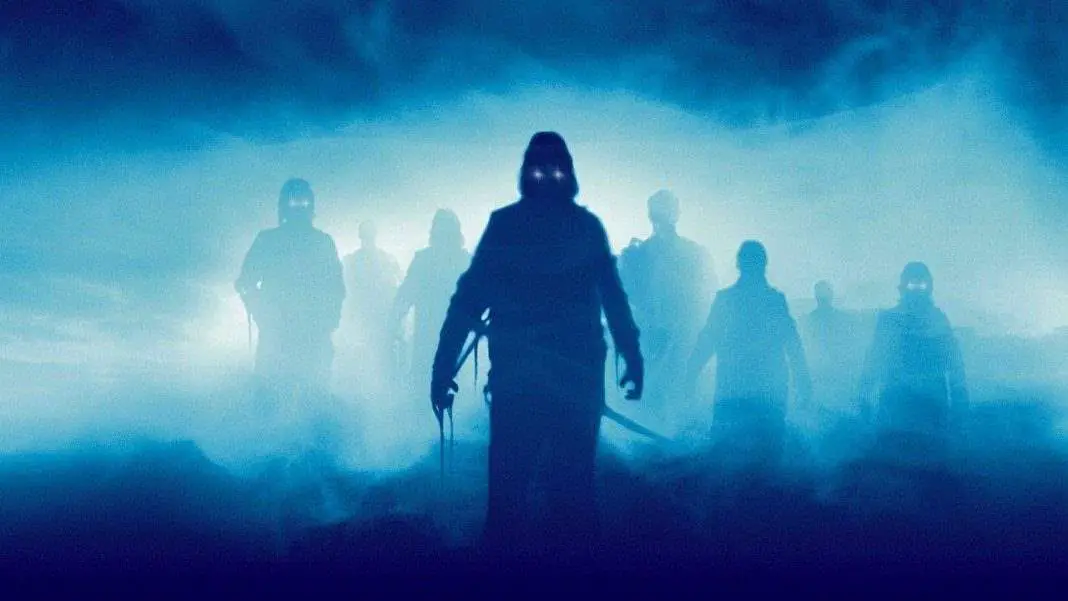I recently decided to give the underrated Italian gem, The Living Dead at Manchester Morgue a try and I’m glad I did. The premise of the film is simple yet effective. An incident at a petrol station involving some questionable reversal skills from our female lead forces Edna Simmonds and George Meaning to travel together after George’s bike is deemed unrideable. With the two going in different directions and on heavy time constraints, Edna persuades George to accompany her to Southgate where she is expected by her ill sister Katie. Little do they know, a government experiment gone wrong has caused the dead to rise and execute a series of grisly murders.
What transpires is an original take on the zombie sub-genre, with enough going on to keep you thoroughly entertained despite its somewhat slow build and at times questionable acting. Much of this originality comes from the zombies, which depart from the traditional George A. Romero models from Night of the Living Dead, through the government experiment gone wrong sub-plot. Although the zombies look similar to Romero’s undead, the lack of humour in the film gives them a darker tone, adding to the fear factor of the zombies which is untouched by campy scenes regularly implemented in the sub-genre.

The film makes good use of the practical effects made available to them by Luciano Byrd, who went on to win an award at the Catalonia International Film Festival for his contributions to the gore-fest which commences toward the film’s climax. It’s this finale which is likely the reason the film finds itself on the video nasties list. The scene where a hospital receptionist is brutally mutilated is still shocking, even by today’s standards. Visuals are very much the film’s strong suit, not only with practical effects but with the beautiful shots of the films picturesque northern setting. These scenes allow us to establish the subtext of the film, with its pleasing rural landscape representing the beauty of the untouched land.
It’s important when discussing this film to touch upon the social commentary presented by director Jorge Grau. The film’s opening sequence is a less than subtle representation of environmental imagery following George as he embarks on his journey from the pollution ridden and agriculturally challenged city of London, to his rural get-away in the lake district. An array of establishing shots early on while travelling through London juxtapose that of later shots of rural England. The effect is a clear representation of the impact of pollution. This pollution-driven subtext continues throughout the film with the unveiling of the root cause to the rising of the dead being an experimental pest control device. The device uses radiation to kill off insects eating the local farmer’s crops, but also has an unbeknown adverse effect on the dead. This is a clear dig towards authority, in particular, the government. Here the government have failed to properly test their equipment, much like with the introduction of DDT which wouldn’t receive a UK ban for a further ten years after this film’s release, despite its carcinogenic properties.

The film then goes on to attack the police force through the inspector’s character. This comes from the power struggle between George and Edna against the inspector who doesn’t believe that zombies are to blame for the murders and rather our two leads. The frustration we feel from the inspector’s stubbornness is intended and only strengthens our siding with main characters George and Edna, adding further likeability to a refreshing duo.
In regards to characters in the film, it’s mostly focused on George and Edna, with characters like the inspector and Dr.Duffield serving more functional roles. George, played by Ray Lovelock, steals the show with his wonderfully witty British charm and surprisingly likeable persona, despite him being a touch misogynistic at times. Edna is also a likeable character with her kind demeanour taking the forefront. She is enjoyable to watch, despite some occasional overacting by Cristina Galbó. All things considered, the two make a nice change when it comes to characters in 70’s horror. So often, we are surrounded by a bunch of characters we couldn’t care less about, which is always underwhelming when it comes to their impending doom. However, when we eventually come to George and Edna’s fates I couldn’t help but feel ever so slightly bereaved as the two had really grown on me.
Ultimately any film that instils this kind of emotion on its audience is usually a great one, as is certainly the case with The Living Dead at Manchester Morgue. A film which boasts incredible visuals, strong camera work, beautiful rural setting, and awesome practical gore. Alongside this, we have an interesting subtext and likeable characters, driven by a solid storyline. Jorge Grau’s magnum opus is certainly a must watch for anyone who loves their classic zombie flicks, and still holds up as one of the best zombie movies of its time. If you haven’t seen it, you can check the film out right here on Wicked Horror.







